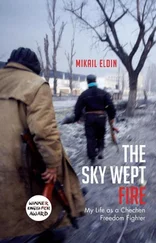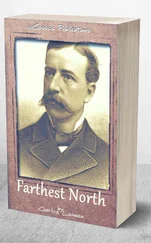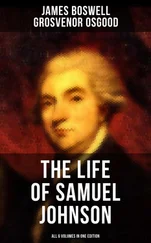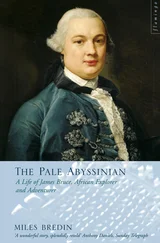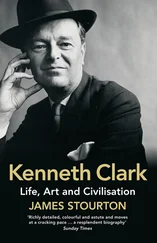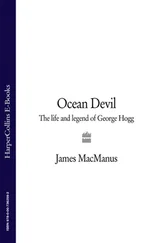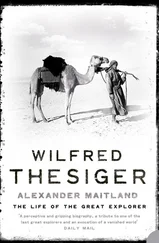1 ...6 7 8 10 11 12 ...25 That night Carter decided to drive the white Polara, which was blocking the Eldorado in the garage. (He leased the Polara as a business car for the tax writeoff.) It was a warm evening, and Carter, at the outset, had business on his mind. He had a midnight meeting with his personal adviser, Nathan Sermond, at Club LaPetite to discuss the Argentina fight; the promoters were balking at giving Carter a sparring partner in Buenos Aires. Carter was also to meet, at the Nite Spot, one of his sparring partners, “Wild Bill” Hardney, who would be joining him in camp the following week. But by 11 P.M., the night was taking some unusual twists.
Sipping vodka outside the Nite Spot with a group of people, Carter bumped into a former sparring partner, Neil Morrison, known as Mobile for his Alabama roots. Carter had been looking for him for months because he suspected him of stealing three of his guns from his Chatham training camp. The theft—of a .22 Winchester, a bolt-action .22 rifle, and a 12-gauge pump shotgun—had occurred the previous fall when Morrison was staying in the camp. Morrison, dressed in dungarees and a white T-shirt, had just been released from prison, and Carter confronted him, accusing him of stealing the guns.
“Man, you know I would never do that,” Morrison said.
“I know a person who’s seen you with my guns,” Carter said. A childhood friend, Annabelle Chandler, had told Carter she saw Morrison with the weapons.
“The hell you do!” Morrison said.
Carter, Morrison, and two other Nite Spot regulars agreed to drive over to Chandler’s apartment, in the nearby Christopher Columbus Projects. There they found Chandler in the bathroom, sick. She had recently returned from the hospital and was suffering from cancer. Carter entered the bathroom and told her he had brought Morrison with him so she could repeat how she saw him with Carter’s guns.
“If I had known you were going to tell him, I wouldn’t have told you,” she told Carter.
“Well, forget about it,” he said in deference to her illness. Carter dropped the matter; his guns had been stolen and sold and lost forever. The group returned to the Nite Spot. Little did Carter know that in years to come, this chance encounter with Neil Morrison and quick jaunt to a run-down housing project to visit a dying woman would be used against him in a devastating way.
The night was unusual for another reason. Word had spread that Roy Holloway, the black owner of the Waltz Inn, had been slain by a white man, Frank Conforti. When the police arrested Conforti, a crowd of people, mostly blacks but not including Carter, angrily yelled at the white assailant. Holloway’s stepson, Eddie Rawls, was the bartender at the Nite Spot, and he pulled up to the club when Carter was in the midst of his dispute with Morrison. Carter expressed his condolences to Rawls, who was coming from the hospital. The group chatted for several minutes before Rawls went inside the club.
There was a buzz at the Nite Spot and other black clubs about a “shaking,” or retaliation of some sort, for the Holloway murder. Carter, however, had never met Holloway and was never heard to express any anger over the murder. He had other things on his mind. Thursdays were known as “potwashers night.” Domestics were given the night off, and the women got into the Nite Spot for free through the back door. By 2 A.M., as the crowd began to thin out at the Nite Spot, Carter was still looking for a date. When last call was announced, he approached the bar and asked for the usual, a vodka. He took out his wallet, but when he discovered it was empty, he told the bartender he’d have to pay up later.
Carter had planned to go to an after-hours social club, so he had to head home to get some money. He spotted his sparring partner, “Wild Bill” Hardney, and asked if he would go with him so Tee would not complain about his going out again. But Hardney, preoccupied with his girlfriend, begged off.
Then Carter noticed John Artis on the dance floor. The former high school football and track star was a sleek, high-spirited dancer who practiced his steps at home, following the advice of one of his uncles: “When you dance, be original and be different from the others. Take a step and change it, and always be smooth.”
Nineteen-year-old Artis loved fast cars and pretty girls, and that night, dressed in a sky-blue mohair sweater with a JAA monogram, matching light blue sharkskin pants, and gold loafers, he was certainly on the prowl. But it had been a long boozy evening—he had been sick earlier—and he was winding down. He had just performed a dazzling boogaloo when Carter called out to him. “Nice moves, buddy,” he said. “Wanna take a ride?” Overhearing the conversation was John “Bucks” Royster, a balding alcoholic drifter who was friendly with Carter. Royster, figuring drinks would be available in the car, asked if he could join them. Outside, Carter flipped Artis the keys and asked him to drive. Then Carter climbed in the back seat, slumped down, and called out directions to his house, about three miles southeast of the Nite Spot.
Artis had only met Carter a couple of times. He rambled on about how boxing was not his favorite sport, but his friends would be impressed when they heard he’d been driving Hurricane’s car, even if it wasn’t the Eldorado. There was talk about women they knew, who was looking fine and who wasn’t, and other idle conversation. Their chatter came to a quick end at 2:40 A.M. when the Polara crossed Broadway and a police car, lights flashing, pulled up next to it. A policeman motioned Artis to stop about six blocks north of Carter’s house.
Artis pulled out his license as Sergeant Theodore Capter, flashlight in hand, approached the car. A second officer, Angelo DeChellis, walked behind the car and wrote down the license number, New York 5Z4 741. Artis handed over his driver’s license but couldn’t find the registration. “It’s on the steering post, John,” Carter said as he sat up in the back. Carter was relieved when he saw Capter, a short, graying officer who had been on the force for eighteen years and had always gotten along with him. “Hey, how you doing, Hurricane?” Capter asked, flashing his light in the back. “When’s your next fight?”
“Soon,” Carter said. “But what’s wrong? Why did you stop us?”
“Oh, nothing, really. We’re just looking for a white car with two Negroes in it. But you’re okay. Take care of yourself.”
Carter shrugged off the incident. Unknown to him, a police radio call had gone out a short while earlier indicating that a white car with “two colored males” had left a shooting scene at the Lafayette Grill. Capter and DeChellis had spotted a white car followed by a black car speeding out of Paterson. The officers gave chase, jumping on Route 4 heading toward New York, but they never saw the cars again. So they had returned to Paterson when they saw and stopped Carter’s car.
Artis drove on to Carter’s house, where Carter went inside, collected about $100, and told Tee he was going back out. The trio returned to the Nite Spot, which was closing down, so Carter instructed Artis to drive to Club LaPetite, on Bridge Street, to look for Hardney. But they discovered that that club too had closed; after sitting in the car for a few minutes, Artis and Royster decided to call it a night.
Artis, who was still driving, dropped off Royster on Hamilton Street sometime after 3 A.M. With Carter now in the front seat, he continued down Hamilton, then turned right at East Eighteenth Street. At the intersection of East Eighteenth and Broadway, Artis put on his right blinker and waited for the signal to change. Suddenly, a patrol car came screeching behind them. The cop hurriedly said something into his car radio, opened his car door, and hustled over to the bewildered Artis and Carter. Then they recognized Sergeant Capter again.
Читать дальше

